Come Enjoy the Season’s Magnificence
Posted in Gardens and Collections on October 19 2010, by Plant Talk
These Images of the Garden from Autumns Past Set the Mood

Inside The New York Botanical Garden
Posted in Gardens and Collections on October 19 2010, by Plant Talk
These Images of the Garden from Autumns Past Set the Mood
Posted in Gardens and Collections on October 8 2010, by Plant Talk
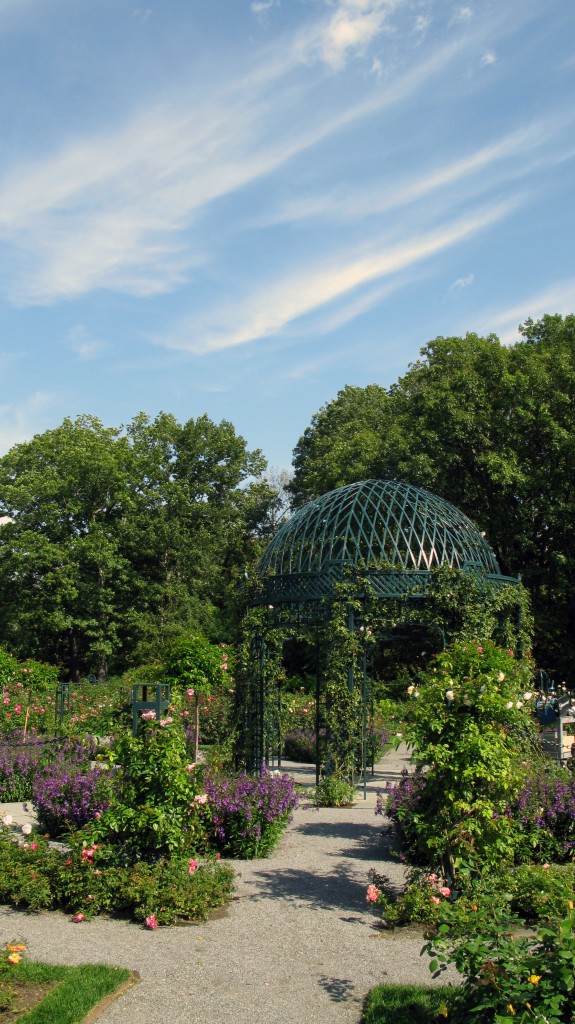
| Ann Rafalko is Director of Online Content. |
Yesterday a colleague and I headed over to the Peggy Rockefeller Rose Garden for a video shoot with the curator of the garden, Peter Kukielski. I’m new to The New York Botanical Garden, and haven’t been able to explore the 250 acres of gardens, exhibitions and forest as fully as I would have liked to by this point (Oh meetings! Oh weather!), so imagine my surprise when we crested the hill overlooking the Rose Garden and were enveloped by the intoxicating scent of the roses welling up to meet us.
Unreal. I wish smell-o-vision existed so I could give you a small preview of the aroma! Sadly it doesn’t. And even though I had previously read about the phenomenal show that the roses put on in fall, I still wasn’t prepared for how glorious the Rose Garden is right now. So, if you’re in the New York City area this weekend and looking for something to do, come to The Garden and take time to smell the roses. You won’t be sorry.
Roses not your thing? Never fear! There's plenty going on at The Garden this weekend.
Posted in Gardens and Collections, Gardens and Collections, Video on September 9 2010, by Plant Talk
Garden Tests Roses for Sustainability in Earth-Kind Trial Bed
 |
Rustin Dwyer is Visual Media Production Specialist at The New York Botanical Garden. |
Posted in Exhibitions, Gardens and Collections, Gardens and Collections, The Edible Garden, Video on September 3 2010, by Plant Talk
 |
Rustin Dwyer is Visual Media Production Specialist at The New York Botanical Garden. |
Family Garden Celebrates Caribbean, China, Ireland, Italy, Korea
Posted in Gardens and Collections on June 10 2010, by Plant Talk
New Varieties Shine as English Grower and Garden Awarded this Weekend
 |
Michael Marriott is Technical Director at David Austin® Roses, where he has worked for over 25 years. |
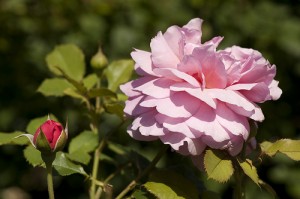 The Peggy Rockefeller Rose Garden is quite simply one of the very best rose gardens in the world, and so I am always very keen to have our new varieties planted there. The curator of the rose garden, Peter Kukielski, has been very generous with his allocation of space to the David Austin English Roses, with long stretches of them in the beds on either side of the garden’s entrance.
The Peggy Rockefeller Rose Garden is quite simply one of the very best rose gardens in the world, and so I am always very keen to have our new varieties planted there. The curator of the rose garden, Peter Kukielski, has been very generous with his allocation of space to the David Austin English Roses, with long stretches of them in the beds on either side of the garden’s entrance.
Each year David Austin Roses introduces several new varieties, and, hopefully, Peter will find space for three or four plants of each variety. Our latest introductions are Princess Alexandra of Kent, Young Lycidas, Wisley 2008, Sir John Betjeman, and Munstead Wood.
Princess Alexandra of Kent (above, right) is a particularly impressive variety with very large, full-petaled flowers that are a warm, glowing pink. They have a wonderful tea fragrance, which develops into lemon and, later, hints of black currant. It makes an attractive bushy shrub of about four feet tall.
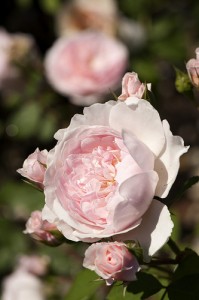 Young Lycidas also has large impressive flowers but they are a much deeper color, being a wonderful blend of deep magenta, pink, and red. The outer petals tend toward light-purple, although, interestingly, this is in contrast to the outside of the petals, which are quite silvery. The growth is bushy, the stems tending to arch in a most attractive way. There is delicious fragrance that starts as pure tea but then changes to a blend of tea and old rose, with intriguing hints of cedarwood.
Young Lycidas also has large impressive flowers but they are a much deeper color, being a wonderful blend of deep magenta, pink, and red. The outer petals tend toward light-purple, although, interestingly, this is in contrast to the outside of the petals, which are quite silvery. The growth is bushy, the stems tending to arch in a most attractive way. There is delicious fragrance that starts as pure tea but then changes to a blend of tea and old rose, with intriguing hints of cedarwood.
Wisley 2008 (left) has smaller flowers, but they are perfectly formed, the petals arranged in a rosette. The color is absolutely pure soft-pink, the color fading perhaps just a little toward the outside. It is quite vigorous and very bushy and makes a very good landscaping rose. The fragrance is fresh and fruity with hints of raspberry and tea.
Sir John Betjeman is quite modern in appearance, the color being a bright deep-pink and intensifying with age. It flowers particularly freely and has a very bushy habit. The fragrance is light and rather “green.”
Munstead Wood is arguably the most obviously attractive of the group. The flowers are large and a deep-velvety crimson, with a strong old-rose fragrance with hints of blackberry, blueberry, and damson. It will stay a compact rose even in the warmer parts of the United States.
Please do visit the Peggy Rockefeller Rose Garden—it is superb. You can see the whole range of roses, and they are most beautifully looked after.
This weekend in New York, at its 10th annual conference, the Great Rosarians of the World™ will honor world-renowned hybridizer of English Roses David Austin and present its 2010 Rose Garden Hall of Fame Award to the Peggy Rockefeller Rose Garden. Come to the Botanical Garden on Saturday, June 12, for a lecture series on growing sustainable roses and for a reception in the Rose Garden. Through July 1, 2010, vote for the Rockefeller Rose Garden as American’s Best Garden.
Posted in Gardens and Collections on April 29 2010, by Plant Talk
For Arbor Day, Staff Name Some Favorites; Tell Us Yours
 Carol Capobianco is Editorial Content Manager at The New York Botanical Garden.
Carol Capobianco is Editorial Content Manager at The New York Botanical Garden.
In honor of Arbor Day tomorrow, I asked some of the Horticulture staff to divulge their favorite tree at the Garden. With over 30,000 trees to select from, this could be daunting. For some, it was a cinch and they rattled off a tale about a special specimen. For others, it was like picking a favorite child, so they gave several choices.
Todd Forrest, Vice President for Horticulture and Living Collections, judiciously noted: “My favorite tree is always the one we just planted, because it helps ensure that our historic landscape will have trees for people to enjoy for decades to come.” (But he later did offer up a name, see below.)
Here, then, are some exceptional trees at the Garden and the reasons why they made the grade. Let us know which of the thousands of trees at the Garden—and we keep planting additional ones—is your favorite. We’d love to hear from you.
Posted in Gardens and Collections, Learning Experiences on April 16 2010, by Plant Talk
Children Learn About Plants Through Hands-on Gardening
 |
Toby Adams is Manager of the Ruth Rea Howell Family Garden. |
 Clickety clank. Bumpity bumpity bump. Two pairs of ears stand up scanning the Family Garden for the noise. Clickety clank. Bumpity bumpity bump. Two curious, twitching noses aim this way and then that.
Clickety clank. Bumpity bumpity bump. Two pairs of ears stand up scanning the Family Garden for the noise. Clickety clank. Bumpity bumpity bump. Two curious, twitching noses aim this way and then that.
“What’s that clanking and bumping?” wondered sleepy Darwin, the Family Garden’s newest resident rabbit (at left in photo).
Newton hopped around his hutch, the Family Garden’s original resident rabbit had heard these noises before. “I think I know what the clinkety clanks and bumpity bumps are,” Newton assured Darwin. “The Family Garden must be open again!”
Posted in Gardens and Collections on March 24 2010, by Plant Talk
Some 100-Year-Old Specimens Destroyed; 150 Others Damaged
 |
Todd Forrest is Vice President for Horticulture and Living Collections. |
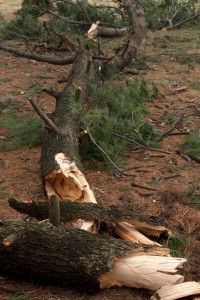 While gardeners are accustomed to coping with the slings and arrows of outrageous weather, this winter has tested the patience of even the most experienced horticulturists among the Garden’s staff. Two wet, heavy snowstorms in February caused significant damage to the Garden’s historic trees, but nothing prepared us for the damage of the nor’easter that hit New York the weekend of March 13 and 14.
While gardeners are accustomed to coping with the slings and arrows of outrageous weather, this winter has tested the patience of even the most experienced horticulturists among the Garden’s staff. Two wet, heavy snowstorms in February caused significant damage to the Garden’s historic trees, but nothing prepared us for the damage of the nor’easter that hit New York the weekend of March 13 and 14.
The deep snow that fell only two weeks before had not even completely melted when the torrential rains started late in the week of March 8. The combination of snowmelt and rain completely saturated the ground, creating the perfect conditions for what foresters call “wind throw”—trees, roots and all, torn out of the ground by fierce winds. With winds holding steady at between 30 and 40 mph and gusting to over 70 mph, many of the Garden’s historic trees had no chance.
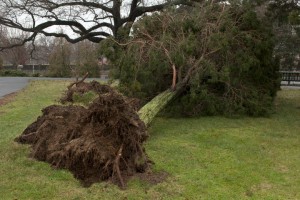 By Sunday, March 14, 50 of our trees, including many historic conifers planted in the early 1900s and oaks older than the Garden itself, were lying across the ground. More than 150 other trees lost limbs or were otherwise damaged. Nearly every small tree planted in fall 2009 was uprooted. While our arborists will be assessing the full extent of the devastation for weeks to come, we are already mourning the loss of some of our favorite trees, including a Ponderosa pine planted in the Ross Conifer Arboretum in 1904 and a blue Atlas cedar planted in the Benenson Ornamental Conifers in 1966.
By Sunday, March 14, 50 of our trees, including many historic conifers planted in the early 1900s and oaks older than the Garden itself, were lying across the ground. More than 150 other trees lost limbs or were otherwise damaged. Nearly every small tree planted in fall 2009 was uprooted. While our arborists will be assessing the full extent of the devastation for weeks to come, we are already mourning the loss of some of our favorite trees, including a Ponderosa pine planted in the Ross Conifer Arboretum in 1904 and a blue Atlas cedar planted in the Benenson Ornamental Conifers in 1966.
Posted in Gardens and Collections on January 26 2010, by Plant Talk
 The Peggy Rockefeller Rose Garden has been named as the 2010 Rose Garden Hall of Fame inductee by the Great Rosarians of the World™ (GROW). In announcing the award, GROW said the selection was based on the recent renovation of the Rose Garden, which has created “a sustainable public garden representing an outstanding collection of historic roses.”
The Peggy Rockefeller Rose Garden has been named as the 2010 Rose Garden Hall of Fame inductee by the Great Rosarians of the World™ (GROW). In announcing the award, GROW said the selection was based on the recent renovation of the Rose Garden, which has created “a sustainable public garden representing an outstanding collection of historic roses.”
“In the world of roses, this is like winning the Best Picture Oscar,” says Peter Kukielski, Curator of the Rose Garden.
To be considered for the award a rose garden must be open to the public, be recognized as having an outstanding design or historical significance, display an outstanding collection or broad display of roses, and/or promote rose growing with educational outreach programs.
The award will be presented at the 5th Annual New York Metropolitan Rose Council Dinner—in June, of course.
Posted in Gardens and Collections, Video on October 27 2009, by Plant Talk
Develop “Vivid Awareness” at The New York Botanical Garden
 |
Jan Johnsen is an instructor of landscape design in the Garden’s Continuing Education program and principal of the firm Johnsen Landscapes & Pools. |
The Latin word for “cultivate,” colere, means both “to till” and “to cherish.” This dual meaning is particularly apt when talking about The New York Botanical Garden and its magnificent and varied gardens and plant collections. The care and devotion expended to these areas by staff and volunteers illustrate “cultivation” in all its layers of meaning.
As a visitor to NYBG, you can cultivate your powers of observation and by so doing, learn to cherish nature and its processes. I discovered this fact decades ago, as a young landscape architecture student at the University of Hawaii. I was given an unusual assignment that required me to spend 24 hours in an outdoor spot of my choosing. Within that period of time, I had to note all the changes I observed. This included noting the weather, vegetation, rocks, animals, sounds, and anything else that caught my eye or ear. I could not leave the general location for any extended period of time.
This exceptional task strengthened my “observation muscle” immensely. It also expanded my understanding of our interconnectedness with nature, and I learned to cherish it all the more.
The next time you visit The New York Botanical Garden, consider cultivating your awareness by watching the network of life that surrounds you. The birds, trees, flowers, animals, and even lowly earthworms each fill an essential niche within a harmonious whole. By noting the synchronous events that occur within the tapestry of nature, you, too, can develop the singular clarity that Alan Watts, the Buddhist writer, called “vivid awareness.” This lovely approach embraces an appreciation of the natural world’s miraculous unity, and you will never again take Mother Nature’s everyday workings for granted.
Come to the Garden and see the magnificent fall foliage and Kiku in the Japanese Autumn Garden exhibition.
Get Your Tickets
Fall Foliage at The New York Botanical Garden 2009 from The New York Botanical Garden on Vimeo.